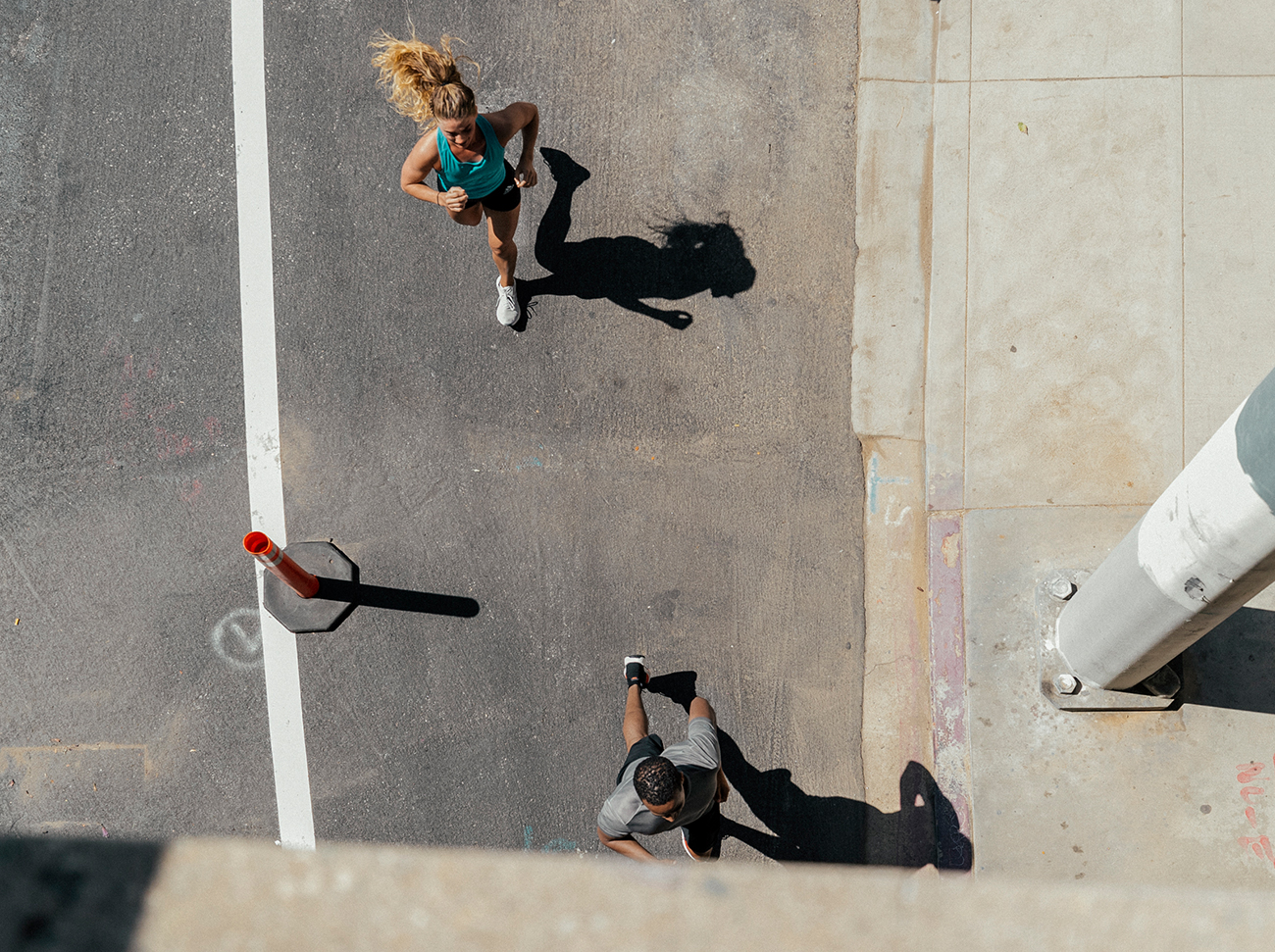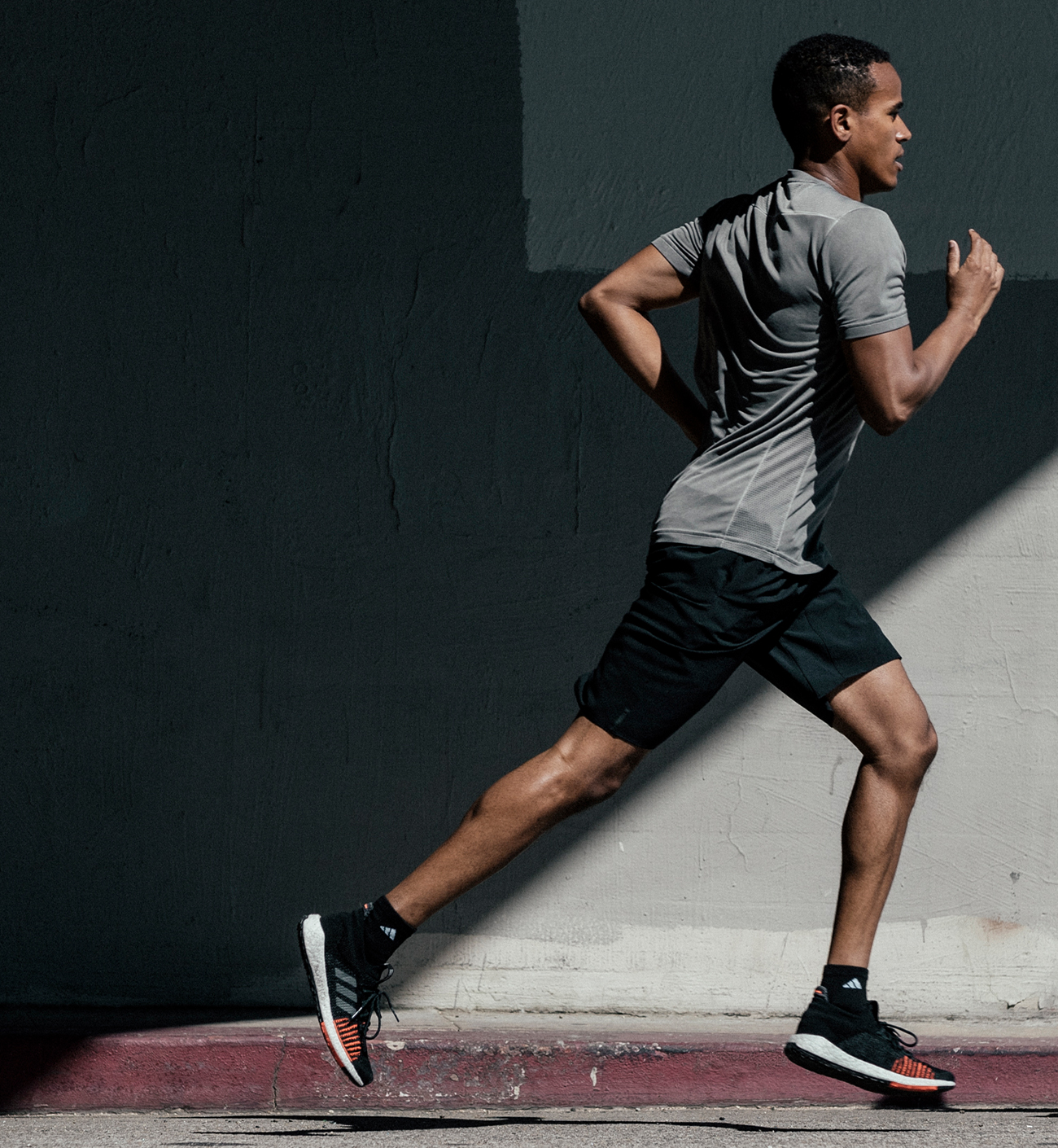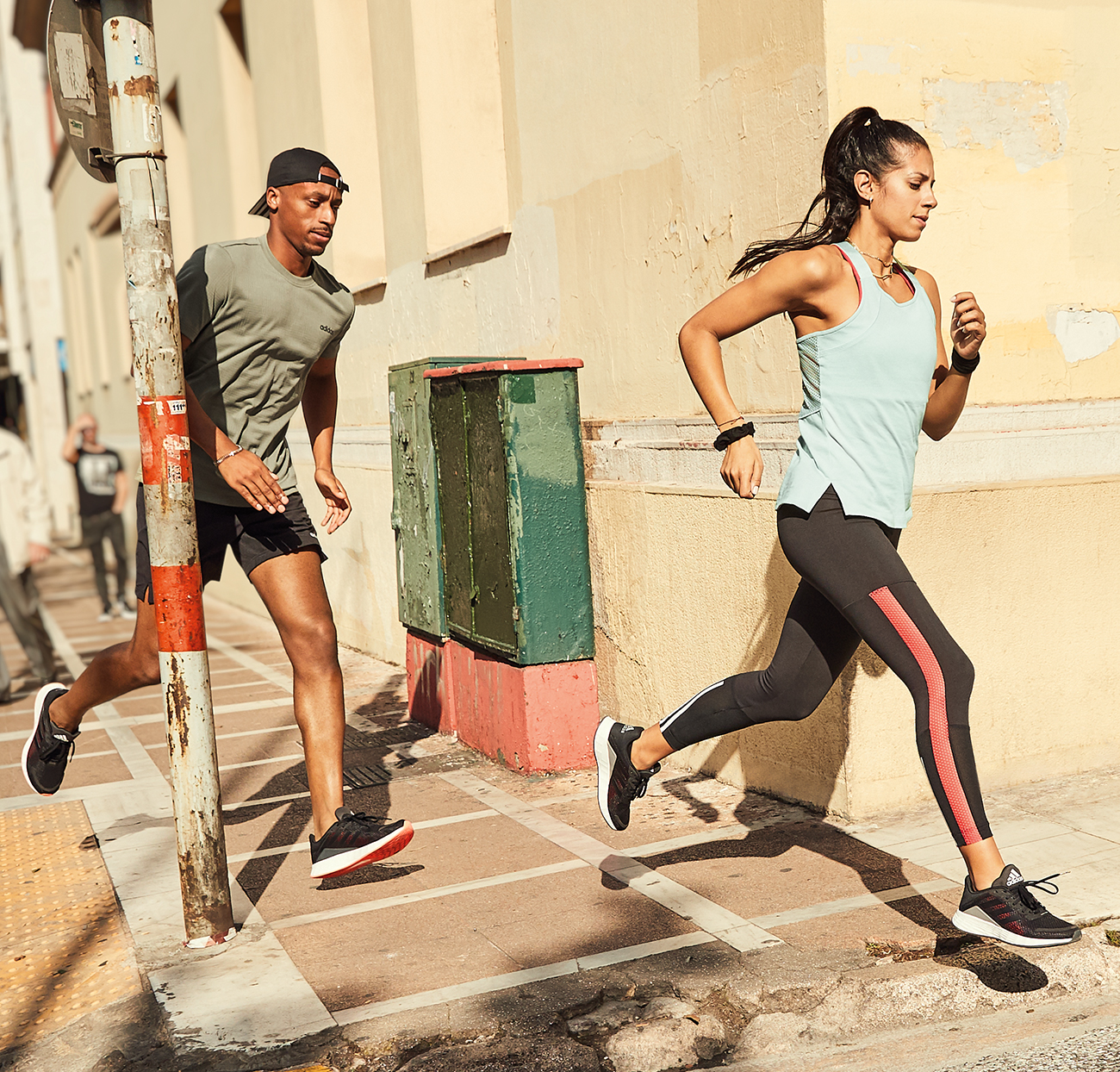We compiled a list of recommendations from Andrew Lemoncello and Dave Connor, EXOS Training Manager at the adidas North America HQ in Portland, Oregon that ultimately will help you learn how to improve running time.

RECOMMENDATIONS ON TRAINING
1. Learn How to Build Your Running Base: Run Slower, Longer
A common mistake is running at too high of an intensity for too long, which can make you more prone to injury later and that could hinder your goals. When people focus too early on maintaining a specific pace like “a ten-minute mile for three, five, ten miles, and speed stays the same, [your] heart rate is going to spike toward the middle or the end, and it's going to stay high,” explains Connor. Then you don't get the endurance training benefits you think you're getting; you’re just working out. Connor and Lemoncello both prefer to write training programs based on time spent running rather than pace.
2. Learn to Judge Your Effort
Lemoncello explains that established runners knows when they are working hard and when they’re cruising. “Being able to dial into your effort level and how long you can push your body for can be the difference between a successful run and one that leaves you knowing you could have performed better.” When runners are trying to achieve a goal they listen to their body in order to get the best out of themselves—whether it’s going for a faster run time or running further than before. This is why practicing this awareness while training is so helpful. If you’re trying to run at a 60% of your maximum effort level, then you can probably hold your pace comfortably for a while. If you’re at 80%, that’s going to be more difficult and you won’t last as long. Effort levels dictate how workouts are designed for you to succeed.
3. Try Using a Heart Rate Monitor While You Run
Connor suggests that if you want to get even more dialed in to improve your mile time, then try using a heart rate monitor so you can train specific physiological functions. “Your heart is your main indicator of physiological stress, whether that's just measuring your heart rate or your heart rate variability.”
4. Determine Your Maximum Aerobic Threshold
To determine what heart rate you should train at, Connor advises most people to follow the widely known 180 formula. Take your age and subtract that number from 180. If you’re thirty years old, then your maximum aerobic threshold is 150. This means you’ll want to maintain a heart rate in the 140’s as you run.
If you don’t have a heart rate monitor, then Lemoncello advises that you can use an effort scale to know how hard to run.
- 50% to 60% effort = aerobic building training or easy running
- 60% to 80% = lactate threshold or steady running (the effort you can hold for around an hour)
- 80% to 90% = anaerobic capacity or stamina work, 90% to 100% = speed work

5. Establish and Improve an Aerobic Running Base
The best workout that can help improve endurance is base building. This a long, slow process of building fitness over a month or more by running slowly. “You should be able to breathe through your nose when you’re doing aerobic base building,” says Connor. The goal is a steady, incremental process. “You have to slow down if you want to speed up.” Lemoncello adds that “an easy way to gauge whether you are running too fast is the talk test. If you’re struggling to hold a conversation while you’re running, then you may be running too fast for an easy run.”
Keep an eye on your maximum threshold. In the case of a thirty-year old, keep your heart rate in the 140s. You’ll notice a difference as you train. Soon you’ll be able to run longer, faster. Once that strong foundation is built over several weeks then you can focus on going further and harder by training in an anaerobic state which is anything above your maximum aerobic threshold.
6. Push Your Anaerobic Threshold
- Once your heart rate goes above your aerobic threshold your body starts producing lactate, your fuel, faster than you can clear it.
- When that happens over long distances, you’re forced to slow down due to fatigue or pain.
- With a strong aerobic base built, your endurance will last longer.
- The higher your threshold is, the longer you can work out at a higher intensity, which means faster performance gains.
Coach Lemoncello’s Suggested Anaerobic Workout Plan
Here is an example of what a typical workout for building your anaerobic threshold might look like:
- Warm up for 10 to 15 minutes with some easy jogging
- Run at around 70% to 80% of your max effort for 15 minutes
- Cool down for 10 to 15 minutes with some more easy jogging
- The key to this workout is that the speed shouldn’t be the limiting factor, it should be the length of the workout. You can do this for several weeks by increasing the amount of time running at your anaerobic threshold effort/pace. Within a few weeks, you’ll typically find yourself running double the amount of time at this pace of when you did the workout for the first time.

7. Do Anaerobic Workouts to Help Improve Endurance
After a solid running base is established, Connor suggests training on a periodic schedule. So maybe you choose two weeks where you're going to work really hard to push that anaerobic threshold one or two days a week with medium and high intensity workouts.
- Start running intervals, hills and repeats to increase your heart rate.
- Change it up with different HIIT workouts to challenge the body in new ways.
- It typically takes the body more than 24 hours to recover higher intensity workouts.
- Do these types of endurance building work outs one-to-two times a week when starting out.
- Generally, when training for a shorter race, you want to spend more time at a higher intensity. The longer the race means the more time you want to spend at lower intensity.
Coach Lemoncello’s Suggested Workout for Building Speed
A typical workout for speed may look like this:
- Warm up for 10 to 15 minutes with some easy jogging
- Run 10 times 30 seconds hard with one-minute jogging in between
- Cool down for 10 to 15 minutes with some more easy jogging
- The beauty of this kind of workout is that it can be easily changed to have some variety to your workouts.
- You can increase the amount of reps you are running, the length of the reps (for instance running hard for 30 seconds, 60 seconds, 90 seconds, 60 seconds, 30 seconds).
- You can even do these on a hill so that you are strengthening your legs a little more.
Pro Tip: the workouts that are mentioned will feel different for all athletes. Some athletes will feel very comfortable running the longer, more sustained efforts and others find the speed workouts easier. Your rate of recovery will be different from each workout also so take note of this so you can adapt your training accordingly.
8. Proper Warm Up, Proper Cool Down
It’s common to see track and field athletes, experienced runners, and people who have competed at elite levels warm up before starting any run. Warming up the body will help prevent injuries and can prepare your legs for the run, which can help improvement of performance. Always perform stretching after you’ve run for 10 to 15 minutes so that you don’t increase the risk of injury by stretching cold muscles. Once you’ve finished your run, cool down with foam rolling. A foam roller will help circulation and blood flow which provides more oxygen to sore muscles. This will help reduce inflammation which can help lower the chance of injury for your next run.
DIET RECOMMENDATIONS
Every body is different. Everyone has different sensitivities to food and various cultural reasons for their diet. Some bodies thrive on a low carb, high fat diet, while others thrive on a high carb, low fat diet. Testing foods out helps. Connor suggests talking to a registered dietician for advice on what could work to achieve your goals.
COMFORT REQUIREMENTS
Finding a shoe that is comfortable through long-distance miles or short interval training is essential for comfort and your mental commitment. Many long-distance runners like wearing the lightweight Adizero Boston or Adizero adios, true racing flats developed for a locked-down fit and fast training. Other runners prefer to train in Ultraboost for maximum energy return on each step. Solarboost running shoes are known for their targeted support in the areas that need it most. Try out different running shoes to determine what is most comfortable for you and stick with the ones that keep you the most comfortable through your workouts.
If you are training for a race, be sure to share your tips on how to improve mile time with us by tagging @adidasrunning on Instagram and Twitter.
